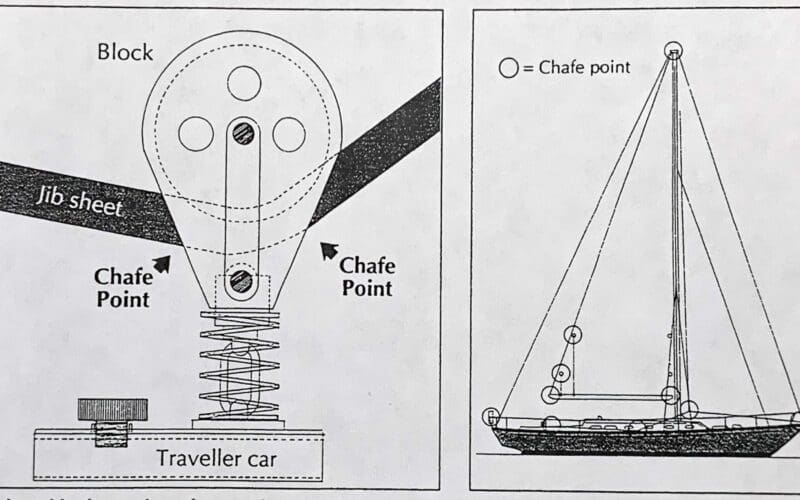
Often it’s the unrelenting, deafening scream of the wind that is the most terrifying and unnerving part of a storm, but from the standpoint of the vessel’s survival, the wind’s effects are secondary. Water does the damage. While wind does cause a boat to heel over, when the wind stops, other things being equal, the boat stands up again. But a roaring crest crashing down the face of a stormy sea can smash onto a boat with tons of force and, when the wave rolls past, the boat may be left shattered. Because they bear such great potential for damage, the skipper must be wary of the waves and how they strike the boat.
With the skipper’s help, the helmsman must be constantly aware of the seas and steer the boat to minimize wave impact. This means being prepared to make quick course changes to take a sea on a bow or quarter rather than abeam, dead ahead or astern. It means steering at an angle across the face of a wave as it overtakes you. A single boarding sea can rip off stanchions, remove life rafts, shatter windows or ports, crush dinghies, open hull-deck joints, or inflict other structural damage on the vessel. The potential for damage as a result of water impact is so great that the prudent skipper adopts storm sailing tactics to avoid breaking wave impacts if at all possible. That might entail heaving to or it could mean running off while using drogues to control speed. As the storm builds, the wind may make the most noise, but it is the seas that must be dealt with carefully.
Some gear failures that can be controlled by adept seamanship in moderate conditions become unmanageable in heavy weather. One case is the parting of a shroud or stay. In moderate conditions, prompt maneuvers to shift the stress to other intact elements of the rig might save the mast. In heavy weather, however, the forces on the sails and rig are so strong that failure of a shroud or stay can virtually assure a dismasting, and that introduces a whole new realm of damage control — one that’s beyond the scope of this article.
When the storm is upon you, then, how should you, as the skipper, order your priorities? Watch first for seasickness and fatigue in the crew (including yourself) and immediately act to offset it and to keep morale up.
Ensure that the whole crew watches for and corrects chafe, in all its manifestations, and labors actively to keep equipment and stores securely stowed. Select the course and balance the sails to control loading on the steering system and to minimize the likelihood of damage by boarding seas. Be prepared to complete the voyage without the assistance of some vulnerable electronics equipment that can be damaged during heavy weather.
Last but not least, be a leader, sustaining a positive outlook and persuading all hands that the world will return to normal, that the sun will shine again, and that an ordeal measured in hours will form the grist for a lifetime of sea stories.

